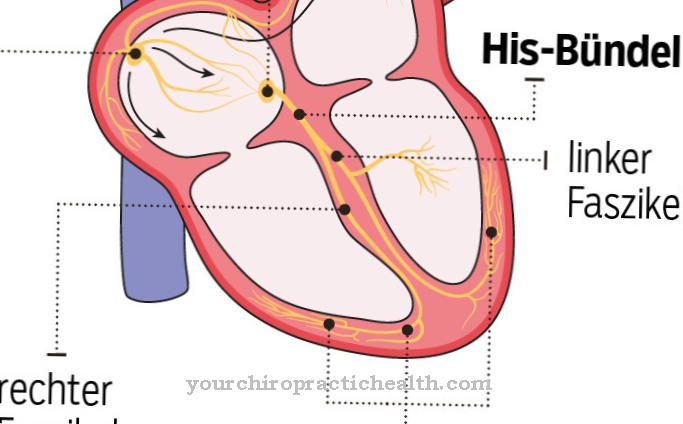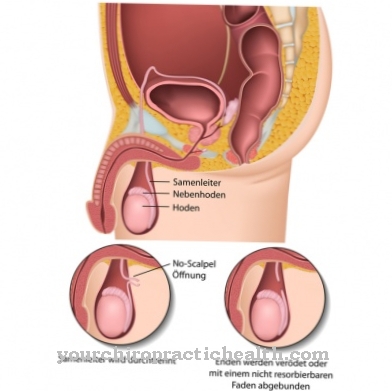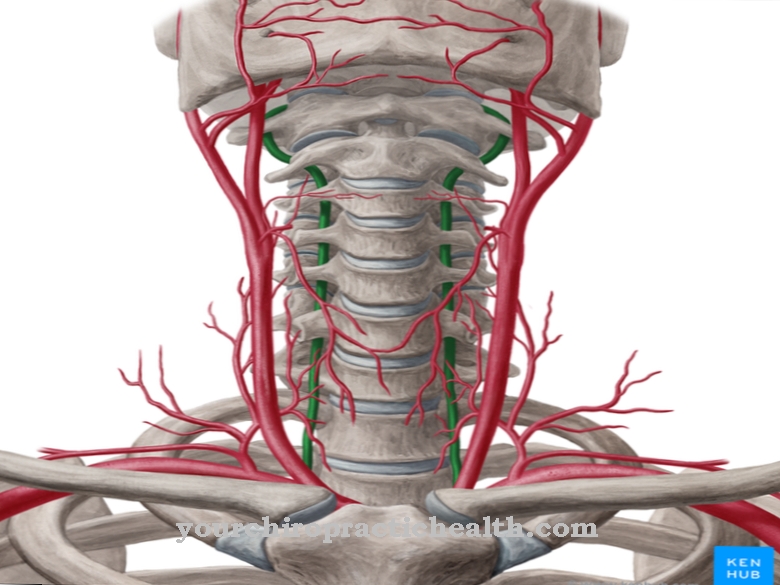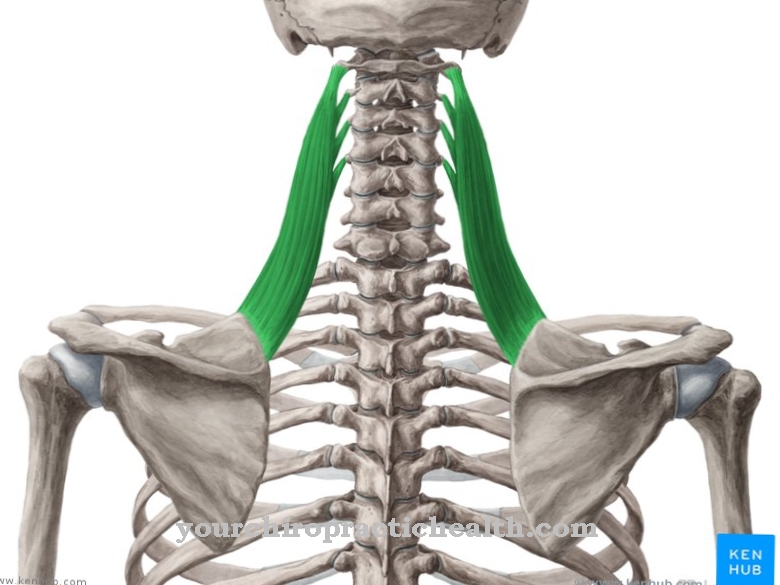The Vocal folds are tissue structures in the larynx that contribute a large part to voice formation. The vocal folds and the glottis located between them regulate both the volume and the pitch of the voice. However, if the voice is overused, hoarseness and nodules on the vocal folds result.
What are the vocal folds?
Colloquially, the vocal cords are often referred to as the vocal cords. However, this is not entirely correct as the vocal cords represent only part of the vocal folds.
The vocal folds are tissue structures that are located within the larynx in the throat and are covered with mucous membrane. Different sounds can be generated by the vocal muscles, which are located in the vocal folds. When speaking or singing, the ligaments within the vocal folds are made to vibrate, creating different sounds.
Anatomy & structure
The two vocal folds are made up of tissue structures within the larynx. In the middle of these vocal folds there is a glottis (rima glottidis), which is responsible for generating sounds. Depending on the pitch at which sounds are formed, the glottis can be wide open or largely closed.
While the glottis is closed when eating, so that there is no swallowing, the glottis is wide open when breathing. This creates the triangular shape characteristic of the glottis.
The vocal folds consist of three layers. Inside is the vocalis muscle, also called the vocal muscle. This muscle is capable of producing various sounds by tensing and relaxing. The layer on the outside of the vocal muscle is the lamina proporia, which is a layer of connective tissue. The outermost layer is the mucous membrane and consists of a multilayer, uncornified squamous epithelium.
This layer of the mucous membrane contains glands that produce fluid to keep the vocal cords moist and prevent them from drying out. In the layer of the lamina proporia there is a minimal gap, which is also known as the "Reinke space". A build-up of fluid in this cavity can lead to Reinke's edema.
At the rear end of the vocal folds, the two adjusting cartilages are connected to each other so that the position of the vocal folds relative to one another can be regulated. Above both vocal folds are the pocket folds (plicae vestibulares), which are often declared as "false vocal cords". These pocket folds are used to train the voice when the vocal folds are inoperable due to certain diseases.
Function & tasks
The vocal folds form the end of the windpipe and are responsible for the formation of the voice. The interaction of the musculus vocalis and the musculus cricothyreoideus creates a control loop which makes it possible to regulate the volume and the pitch of individual sounds. However, there are other muscles involved. Different sounds can be produced through the different characteristics of the vibrations.
When the vocal cords tighten, very high-pitched sounds are produced, whereas relaxation of the vocal cords results in low-pitched sounds. When generating high notes, the ribbons vibrate very quickly and can open and close up to 1000 times per second. In the case of low notes, the bands vibrate correspondingly more slowly and do not hit together as often. In adults, the vocal cords are larger and longer, so that the voice is usually deeper than a child's voice.
In the event of a short-term interruption of the voice due to a glottic closure, a cracking sound occurs when this closure is released, which is an important feature of the German language. This occurs above all before a vowel initial sound and vowel initial word stems in compound words. The vocal folds are usually examined during a laryngoscopy or with the help of a larynx mirror at an ear, nose and throat specialist.
You can find your medication here
➔ Medicines for hoarsenessDiseases
The vocal folds in the larynx can be severely affected by various diseases. Overall, the vocal cords are very sensitive and can dry out very quickly. Heating air or a harmless cold is sufficient for this. The dehydration causes hoarseness that can last for several days or weeks. However, in addition to this rather harmless dehydration, there are also serious diseases that can develop in the vocal folds.
Laryngitis, also known as laryngitis, is an inflammation of the vocal folds in its acute form. Most of the time, it affects people who have stressed their voices too much. However, laryngitis can also be caused by a viral infection. The treatment consists of absolute sparing of the voice and the use of antibiotics.
However, constant strain on the voice can also cause vocal cord nodules. This is often the case with singers. These nodules are elevations on the edge of the vocal folds and interfere with the vibration of the vocal folds. A hoarse and smoky voice is the result of these nodules, which disappear again either through rest or through special therapies with a speech therapist.
Reinke's edema occurs when fluid accumulates in the Reinke's room. The edema causes the vocal folds to swell and the result is hoarseness and even voicelessness. The strain on the voice as well as high tobacco consumption probably play a role. High tobacco consumption can also cause polyps on the vocal folds, which can be removed with the help of a surgical procedure.
Tumors, viral infections, or operations can also cause vocal cord paralysis. The vocal folds can no longer open or close properly. Speech therapy can help to eliminate this. However, if this does not improve, surgery is necessary.












.jpg)



.jpg)










.jpg)
